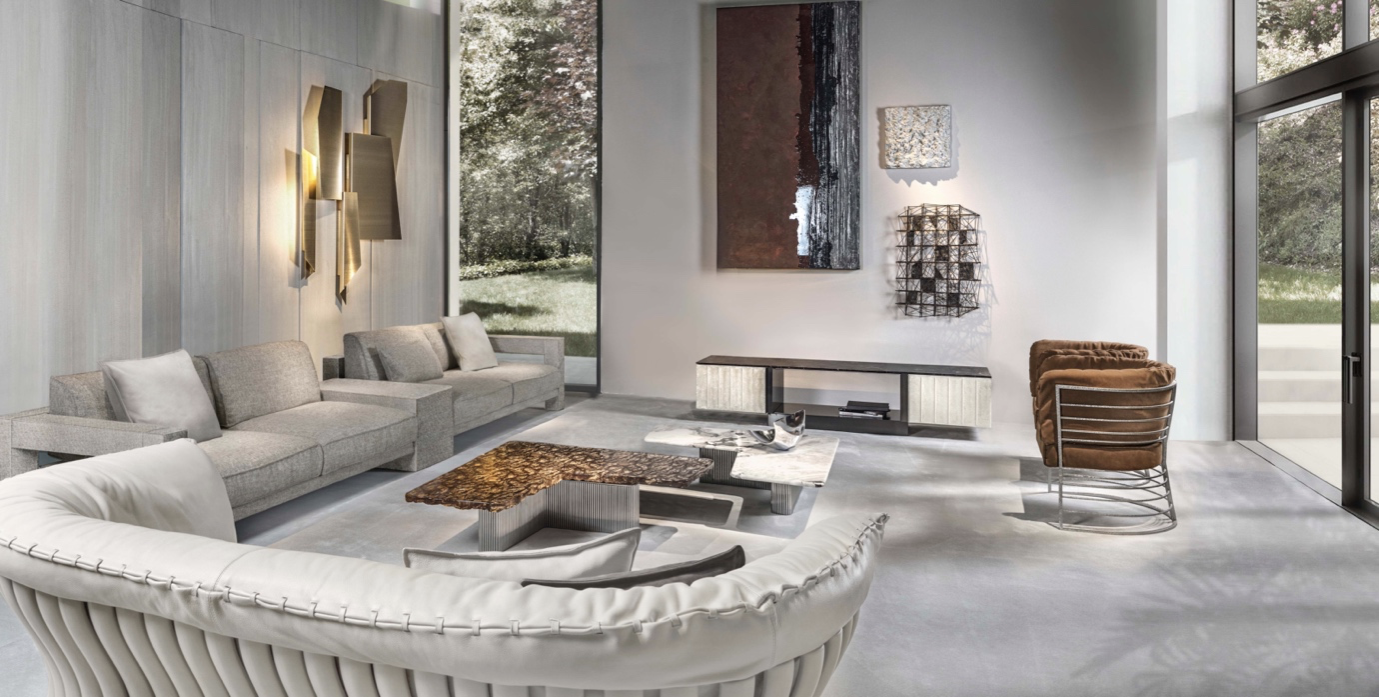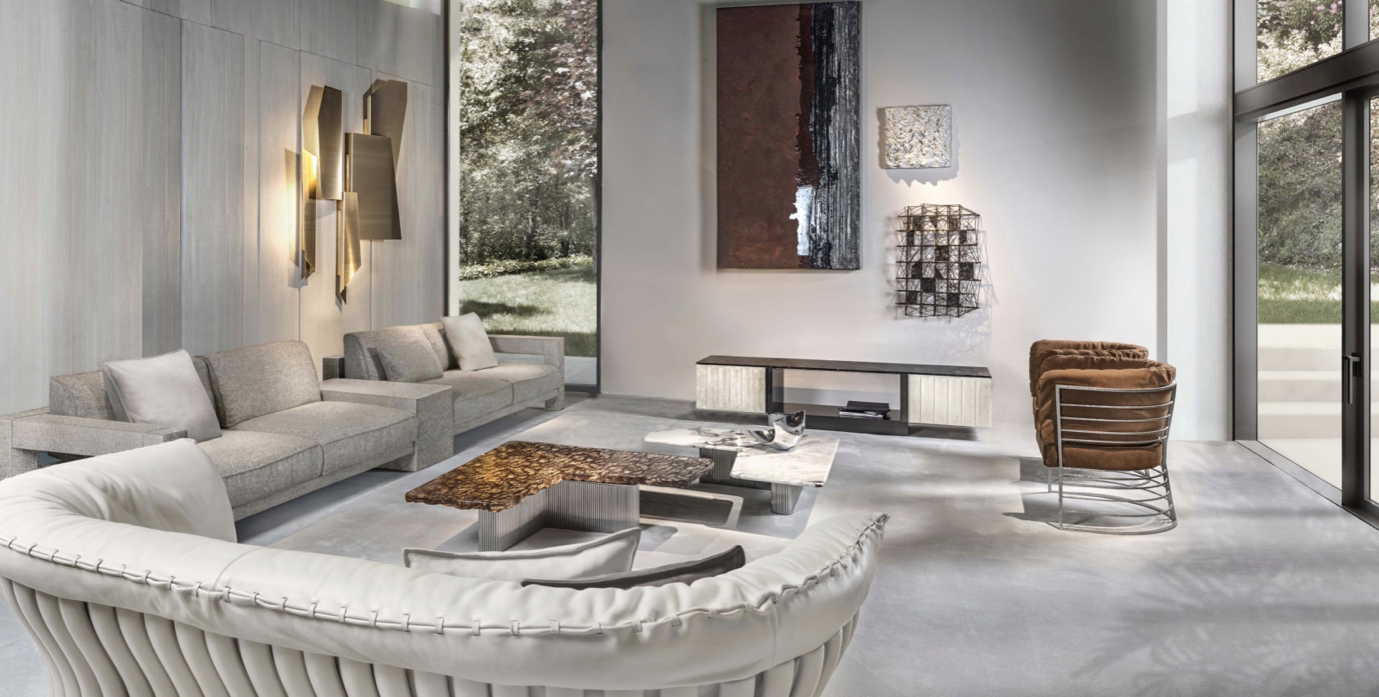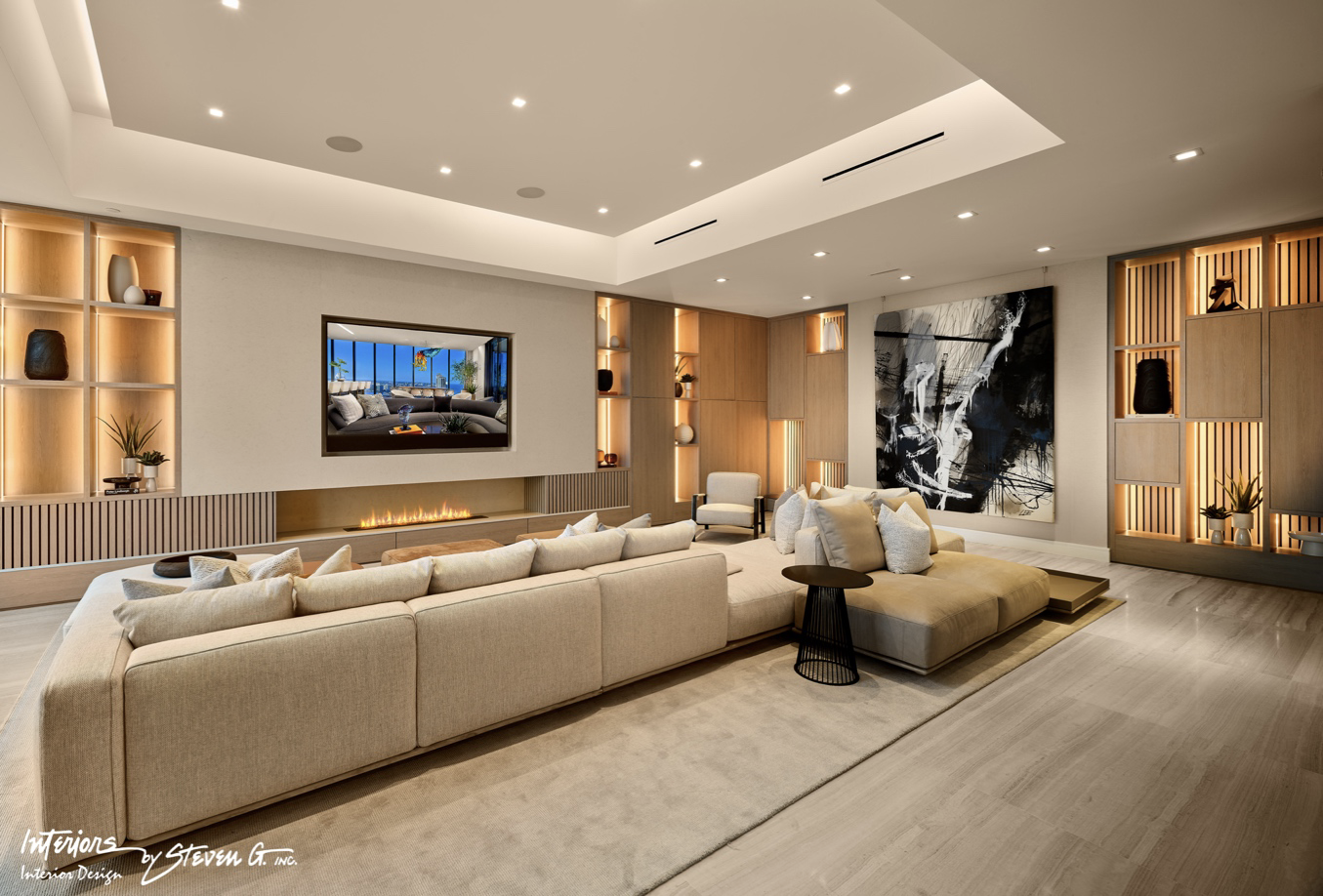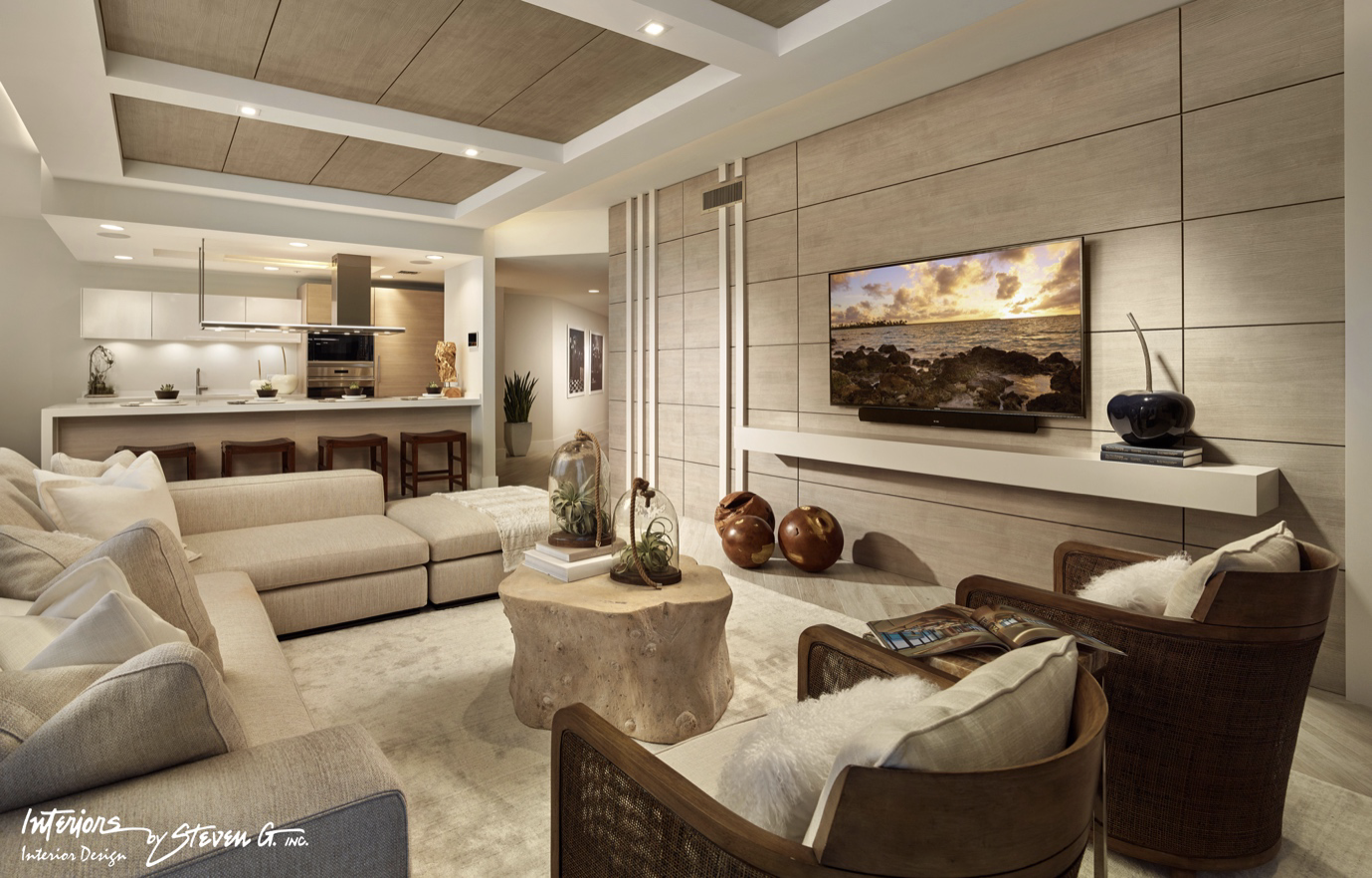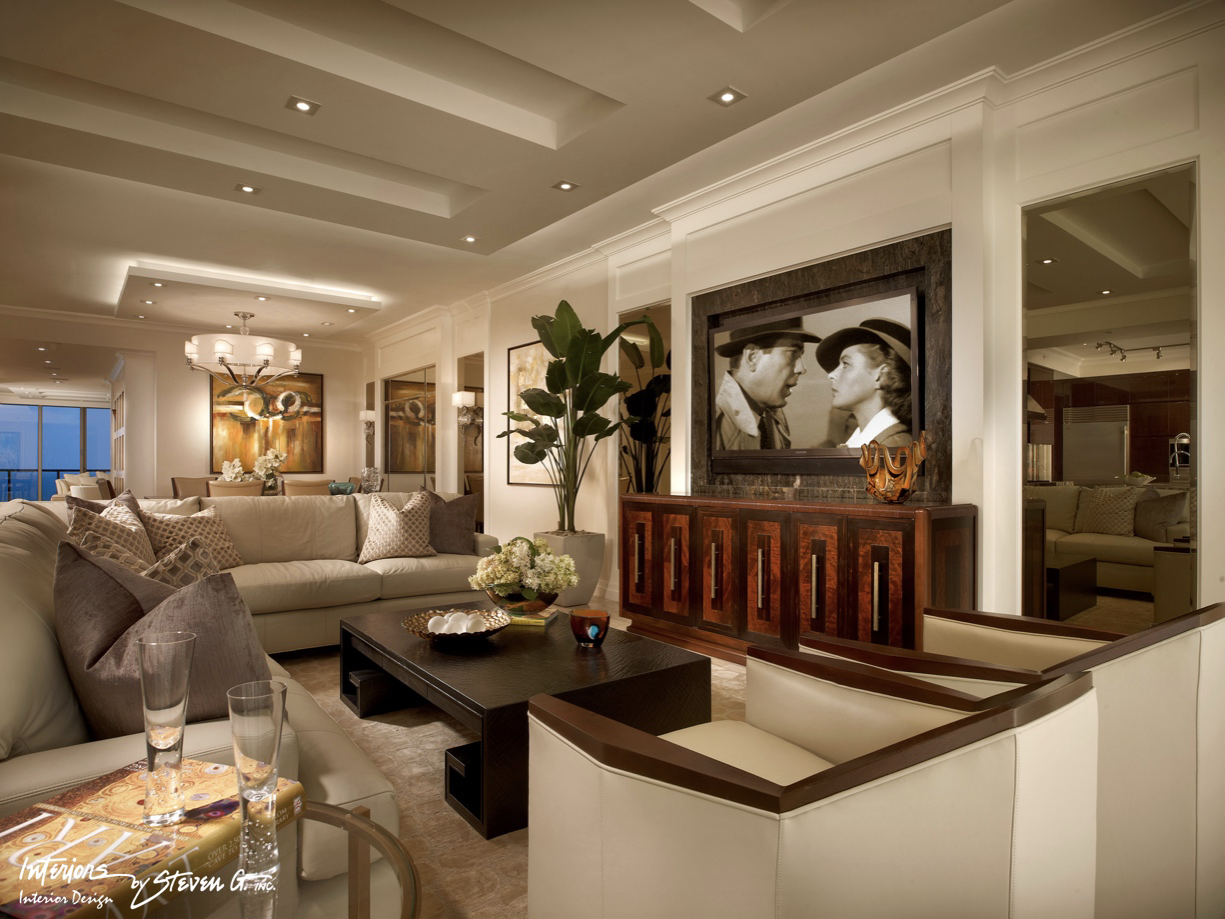7 Interior Design Tips for Making a Room More Functional
At Interiors by Steven G., we can help you create a luxurious and functional home design. To make a room more functional, we consider aspects such as space, lighting, and storage solutions. Here are seven functional interior design tips from the interior designers South Florida residents trust:
1. Plan the Space
Analyze each room’s layout and consider the natural flow of movement, such as walking from one door to another or from a bed to a closet. Arrange furniture in a way that promotes easy navigation and prevents clutter. We can help create designated zones for specific activities, like reading nooks or at-home office workspaces. Maximizing each area’s functionality helps make sure the rooms effectively serve their intended purposes. Functional space planning is particularly beneficial in smaller homes and rooms. Consider purchasing multi-functional furniture, such as ottomans with hidden storage or fold-out desks, when designing smaller areas. This can help optimize the space while adding versatility and style to the room. Multi-functional furniture also allows the space to adapt to your different needs throughout the day.
2. Choose Lighting
Start by considering the room’s purpose before choosing lighting. You can use a combination of ambient, task, and accent lighting to improve the functionality of a room. This can help create an adaptable lighting scheme in areas where focused work or activities take place, such as a kitchen counter or a reading corner. Task lighting like pendant lights, under-cabinet lighting, or adjustable floor lamps are some options that can provide targeted illumination. Ambient lighting, such as chandeliers or recessed lights, can set the room’s overall mood. You can also embrace natural light to make spaces feel brighter and more expansive. To enhance natural lighting, select sheer curtains that allow sunlight to filter through, and place mirrors strategically to reflect natural light and visually enlarge the space.
3. Pick Storage Solutions
Invest in innovative storage solutions to keep clutter at bay and maintain a clean design aesthetic. Consider built-in shelves, cabinets, or storage ottomans to maximize storage without sacrificing style. In bedrooms, you can utilize under-bed storage for linens or seasonal clothing. You can choose furniture with hidden compartments to store remote controls or extra blankets in living areas. Customized storage solutions can be tailored to the specific needs of your home, helping you use your space more effectively.
4. Use Flexible Furniture
Choose versatile furniture that can serve multiple purposes to enhance a room’s functionality. A sofa with a pull-out bed can transform a living room into a guest bedroom when needed. Modular furniture, like sofas and dining tables, can be rearranged to accommodate different activities or group sizes. This adaptability helps maintain the room’s functionality in various scenarios, whether you’re hosting a large gathering or creating a quiet space for relaxation.
5. Consider Colors
The colors you choose for a room can impact its functionality. Different colors can evoke various emotions and moods, so consider the purpose of the space when selecting a color palette. For areas where focus and productivity are the goal, such as home offices or study nooks, choose calming colors like blues and greens. In spaces meant for socializing, such as living rooms or dining areas, warm tones like reds and yellows can create an inviting atmosphere. Consider incorporating neutral colors as a base and adding pops of color with accessories or accent walls. This allows for more flexibility in updating the room’s aesthetic without a significant redesign.
6. Integrate Technology
Consider incorporating built-in charging stations, smart home devices, and hidden cable management solutions to keep your space organized and technologically functional. Choose furniture with built-in USB ports or wireless charging capabilities to connect and power your mobile devices. Concealed outlets and cable organizers help prevent cord clutter in office or entertainment spaces, contributing to a clean and organized environment with enhanced functionality.
7. Personalize the Design
Whether you have a large family, work from home, or love to entertain, a personalized interior design approach helps make sure your space looks good and functions well to support your unique lifestyle. Consider ergonomic furniture and layouts that make your daily activities more comfortable. Families with children can incorporate durable and easy-to-clean materials that can withstand spills and playtime activities. Consider your future plans for the space as you create your design to make it adaptable and long-lasting.
Hire Interior Designers South Florida Residents Trust
At Interiors by Steven G., we can help you create a luxurious and functional interior space. When creating a functional space, we consider mobility, technology, color scheme, furniture, and other design aspects. These considerations allow us to create a luxurious, purposeful, and practical space. Our team can also determine the best use of your space while remaining within your budget. Contact us today to schedule an initial consultation with a designer to review your functional interior design needs and goals.



